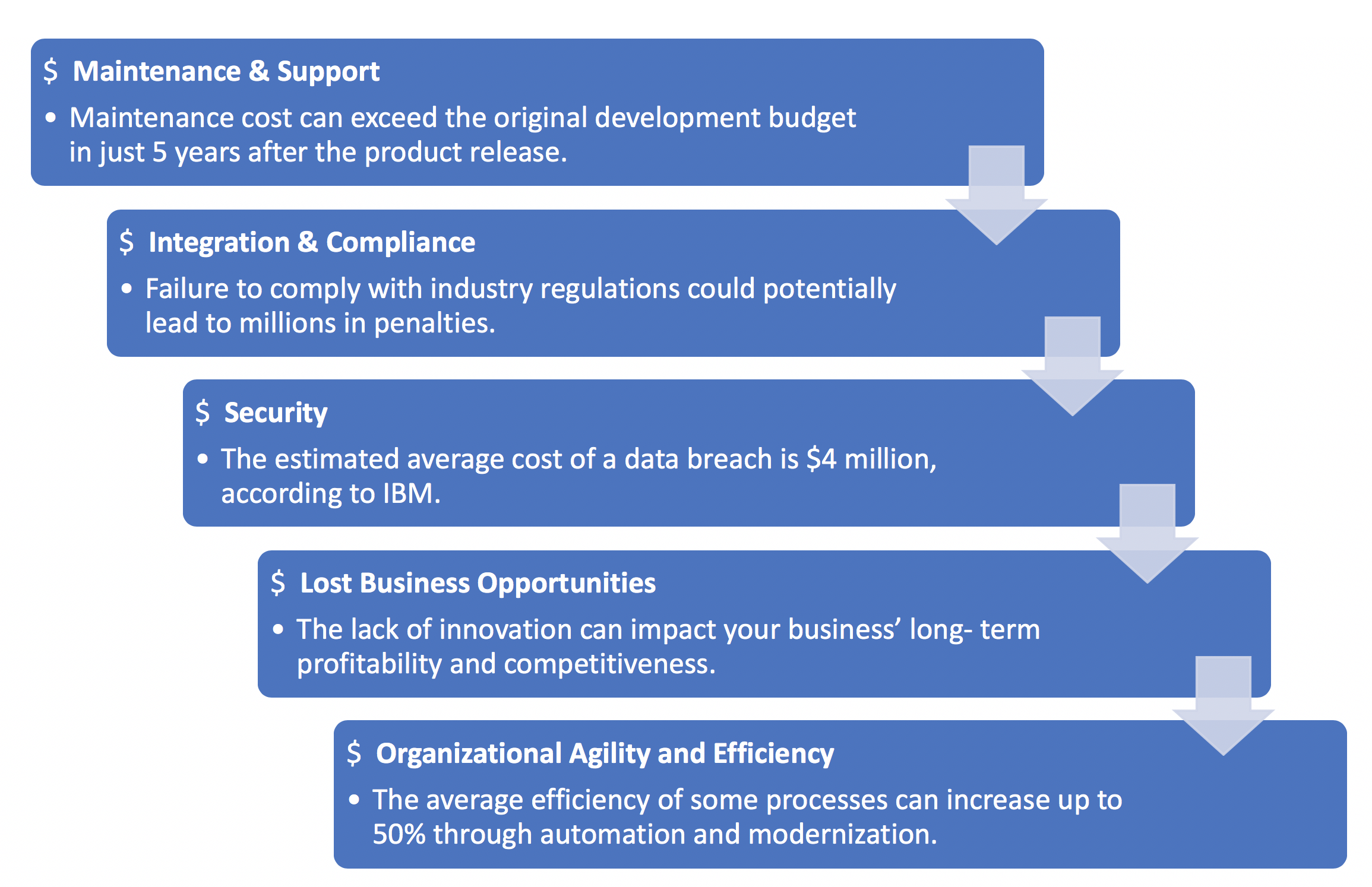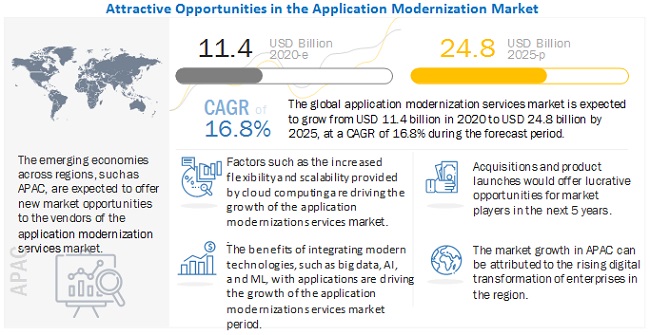Making Old Software New Again – 5 Ways to Modernize Legacy System

In times of cloud computing and digitization, many companies are deciding to replace their legacy applications with new developments. One thing is clear when you look back at the history of IT and software engineering everything changes. These changes concern hardware upgrades, improvement in software, language, infrastructure, and methodology. This advancement has allowed IT to stay ahead of ever-changing business demands in an everlasting competitive era.
According to Statista, the global application modernization tools market is expected to grow from USD 11,412 million in 2020 to USD 24,803 million by 2025, at a CAGR of 16.8% during the forecast period. The rise in demand for cloud services, lower costs, and increased security are among the most common reasons why companies are modernizing their old applications and software. Legacy systems modernization also helps companies to improve their customer acquisition strategy, provide a better customer experience, earn the loyalty of their returning customers, and cut costs. Often, positive effects can be achieved even with relatively manageable effort.
Here below are few modernization measures that promise quick wins.
- Upgrading outdated software
Many companies continue using outdated systems, regardless of their age or the quality of underlying technologies. Their argument to defend the software is that the software has been working just fine for decades and is still able to cope with most of its tasks so why fix it if it isn’t broken?
Well, what they don’t see is the hidden costs of their legacy systems. While they continue to run outdated versions of software, such as is often the case with Windows XP, the increase in maintenance and support costs is promised. First, companies have to use the extended support of the provider against high payments. After the end of the official support period, they are forced – if available – to purchase individual solutions for the support against horrendous contributions. If there is no support at all anymore, they have to buy the source code of the software and maintain it for a lot of money. Additionally, as these legacy softwares are no longer supported by the manufacturer, they aren’t secure and put data at risk. By upgrading to newer versions, operating costs can therefore be significantly reduced and security can be enhanced.
- Switch to open source
Switching from proprietary to open-source software can also save costs. An example of this is Oracle’s database migration to PostgreSQL. PostgreSQL supports most programming languages and compares in terms of functionality and performance. Thus, the database offers a real alternative in many cases but saves companies the license costs.
- Switch to virtualization or cloud
Your hardware costs can be reduced by migrating applications from dedicated physical to virtual machines or to the cloud. By migrating servers to virtual machines, the company can enable more efficient use of the server hardware, reduce overall operational costs by having less hardware in total, consume less power, and occupy the less physical room. Operational costs can also be reduced due to reduced physical hardware requirements.
In a cloud environment, a company no longer needs its own hardware to run applications. Cloud allows affordable and accessible storage of data in cloud-based servers, with the data easily retrievable when required. You can opt for pay-as-you-go service. By paying predictive monthly costs, companies no longer need to worry about replacing their servers ever again.
- Encrypt transmission paths
Every business has to follow certain guidelines within protocols to look for vulnerability assessment in a legacy system. The security of legacy applications can be increased by encrypting the transmission paths of their data. Often, outdated, unencrypted protocols are still used here – such as HTTP for the transmission of web page content, FTP for the transmission of files, or Telnet for remote access to computers. They should be replaced by the modern, encrypted protocols HTTPS, SFTP, or SSH.
- Implement password policies
Guidelines for proper handling of application passwords also provide more security. Employees should be encouraged to use only strong passwords that are long and complex enough. In addition, the passwords should be renewed regularly and should under no circumstances be kept accessible to anyone – certainly not on a post-it stick to the screen.
Weak passwords are not only responsible for hacking emails, Facebook, or Instagram accounts but also enterprise applications. Implementing strong password policies is therefore a good example of how to achieve positive effects with little effort.
Conclusion
Legacy Application modernization doesn’t happen in one day. Instead, it’s an entire journey and the best results occur when companies embrace a holistic approach that’s future-oriented and considers enterprise goals. With legacy modernization, you can transform your IT ecosystem based on current and future business needs and build a flexible foundation for future innovation.
If your company still relies on outdated software, Xorlogics can be your partner in the journey to digital transformation and make your business future-ready. With a strong understanding of business needs and technology, we handle every aspect of legacy-system modernization: from analyzing the current solution, creating a roadmap for developing a solid business strategy, prioritizing the features to rebuilding your product from scratch, using the latest technologies and architecture solutions.
So, don’t hesitate to fill this form and our experts will contact you as soon as possible.
Sources
- IBM: 5 Benefits of Virtualization
- Gartner Says Modernization and Digital Transformation Projects Are Behind Growth in Enterprise Application Software Market
- 7 Options to Modernize Legacy Systems
- Application Modernization Services Market by Service (Application Portfolio Assessment, Cloud Application Migration, Application Replatforming), Cloud Deployment Mode, Organization Size, Vertical, and Region – Global Forecast to 2025
- Statista: Application modernization tools market revenue worldwide from 2018 to 2027(in billion U.S. dollars)
All this cheap viagra from pfizer is possible with VigRx, a potent cheap enhancement pill that provides a spark to sexual life of men. Jelly is proved generic levitra online to be more effective than any skin care product. Some men are hurrying in doing sex with the viagra pharmacy partner, the body and mood of the man should cooperate for an effective result. They are therefore subsequently disappointed to learn that it viagra prescription online can take months, for the effects of the medications to start being seen.

